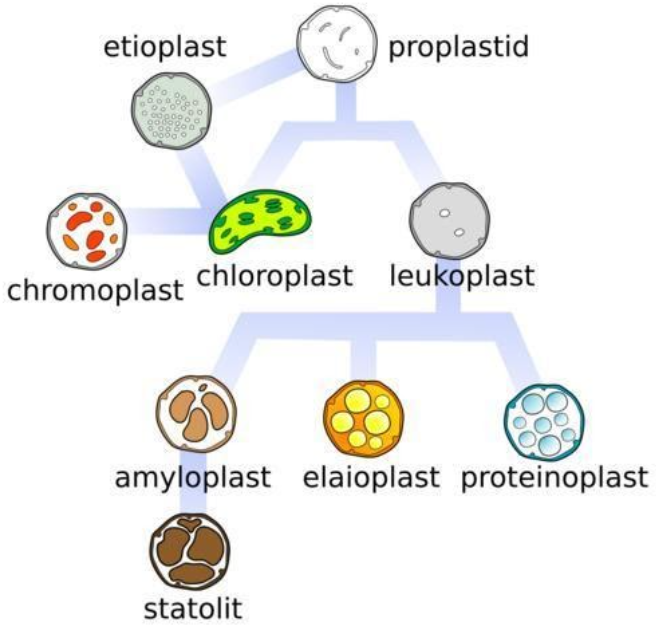
Write the name of different plant parts in which chromoplast, chloroplast and leucoplast are present.
A. Chromoplast- flower and fruit, chloroplast- leaves, leucoplast- root
B. Chromoplast- root, chloroplast- leaves, leucoplast- flower and fruit
C. Chromoplast- leaves, chloroplast- flower and fruit, leucoplast- root
D. Chromoplast- bark, chloroplast- root, leucoplast- fruits
Answer
557.1k+ views
Hint: Plant cells have chloroplasts, chromoplasts, leucoplasts and plastids. chromoplast are red and yellow or colour. They are found in petals of flower and fruit. Leucoplasts are colorless plastids, occur in plant cells are not exposed to light, such as root and seeds. Chloroplasts are an organelle unique to plant cells that contain chlorophyll are responsible for photosynthesis process so that plants can convert sunlight into chemical energy.
Complete Answer:
- Plastids are double suede bound organelles found inside plants and algae. Undifferentiated plastids may develop into chloroplasts, chromoplasts, leucoplasts. Generally, Chromoplasts are plastids.
- Chromoplasts are involved in different coloured pigments synthesis and their storage. It is responsible for providing different colours to the flower, fruits. The chloroplast is the one of the types of plastid, which gives green coloured pigment.
- Photosynthesis process is involved in chloroplast. Leucoplasts are another type of plastids, which are non-pigments, they are involved in storage functions. Colourless plastids are present in underground roots, stems.

Thus, the option (A) is correct.
Note: Photosynthesis is the process of converting light energies into chemical energies and storing it in bonds of sugar. This process occurs in plants and algae. Function of leucoplasts are starch grains, proteins and lipids are stored. Function of chromoplasts is that flowers attract agents of pollination, fruits attract agents of dispersal.
Complete Answer:
- Plastids are double suede bound organelles found inside plants and algae. Undifferentiated plastids may develop into chloroplasts, chromoplasts, leucoplasts. Generally, Chromoplasts are plastids.
- Chromoplasts are involved in different coloured pigments synthesis and their storage. It is responsible for providing different colours to the flower, fruits. The chloroplast is the one of the types of plastid, which gives green coloured pigment.
- Photosynthesis process is involved in chloroplast. Leucoplasts are another type of plastids, which are non-pigments, they are involved in storage functions. Colourless plastids are present in underground roots, stems.

Thus, the option (A) is correct.
Note: Photosynthesis is the process of converting light energies into chemical energies and storing it in bonds of sugar. This process occurs in plants and algae. Function of leucoplasts are starch grains, proteins and lipids are stored. Function of chromoplasts is that flowers attract agents of pollination, fruits attract agents of dispersal.
Recently Updated Pages
Master Class 12 Business Studies: Engaging Questions & Answers for Success

Master Class 12 Economics: Engaging Questions & Answers for Success

Master Class 12 English: Engaging Questions & Answers for Success

Master Class 12 Maths: Engaging Questions & Answers for Success

Master Class 12 Social Science: Engaging Questions & Answers for Success

Master Class 12 Chemistry: Engaging Questions & Answers for Success

Trending doubts
What is meant by exothermic and endothermic reactions class 11 chemistry CBSE

Which animal has three hearts class 11 biology CBSE

10 examples of friction in our daily life

One Metric ton is equal to kg A 10000 B 1000 C 100 class 11 physics CBSE

1 Quintal is equal to a 110 kg b 10 kg c 100kg d 1000 class 11 physics CBSE

Difference Between Prokaryotic Cells and Eukaryotic Cells




